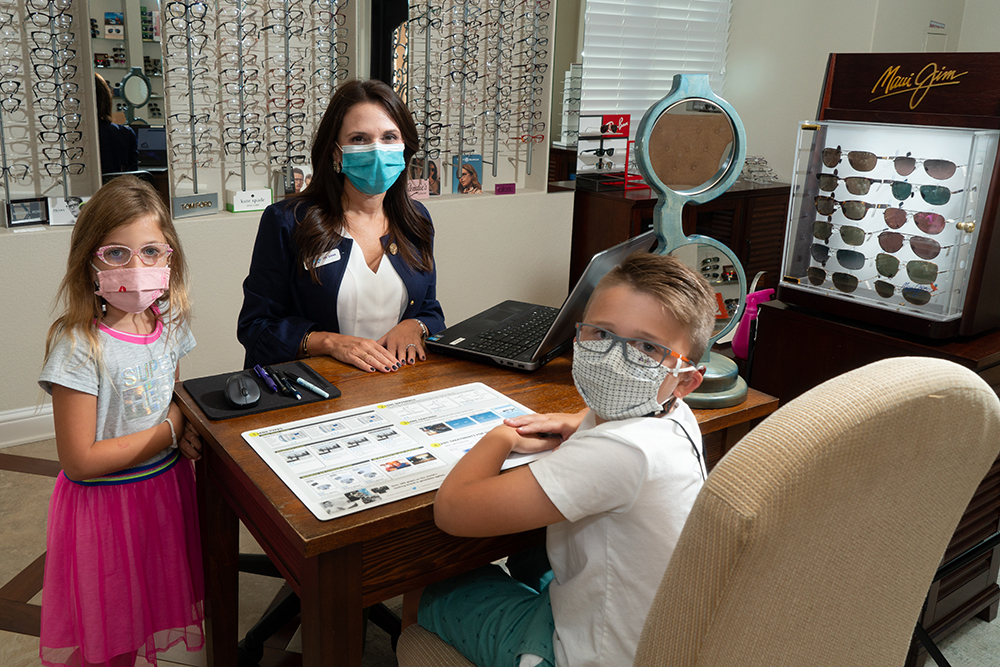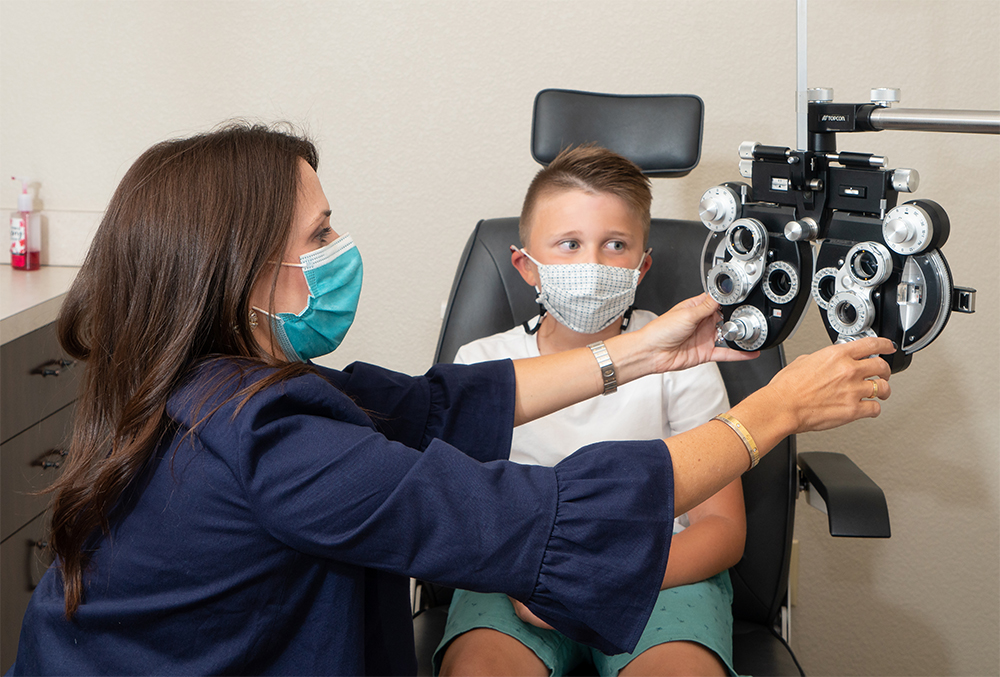Nobody, even in their wildest imagination, could have woken up on January 1 and predicted what a chaotic and unprecedented year 2020 would be. Politics, protests, wildfires and back-to-back hurricanes filled the headlines. Add to that a global pandemic, an invisible and deadly virus, that would bring the world to its knees and change the way we live. Store shelves were bare of basic necessities, businesses closed and people adapted to working and learning from home.
While healthcare information changes almost daily regarding the unpredictable COVID-19 virus, doctors are seeing a consistent increase in other health issues: “isolation side-effects.” An abundance of screen time, gaming/television-watching and a more sedentary lifestyle are having a negative effect on adults, but may have the greatest impact on our youth.
Dr. Jay P. Schwartz of Collin County Pediatrics explains, “We are seeing more issues since school started of what I call “computeritis.” This is the muscle and eye strain you get from working on a computer several hours a day. The muscle strain starts at the neck, goes to the upper back and makes its way down to the wrist.”
“Things you can do to help prevent this,” explains Dr. Schwartz, “is to make sure you have a chair and desk that fit the student. Having an early grade schooler sit at a computer desk designed for an adult will eventually cause some aches and pains. Working on a desktop with a 21+ inch screen is easier on the eyes than working on a 10-inch Chromebook screen.”
 Optometrist Dr. Dana Biederman of Frisco Family Vision agrees. “Staring at computers, tablets and smartphone screens will not permanently damage your eyesight, but it can increase your exposure to blue light. Blue light filtering glasses do filter out most blue light. In some patients, this can reduce the feeling of eye fatigue when using screens. Blue light disrupts melatonin release, which is the hormone that tells your body it’s time to sleep. Using screens within two hours of bedtime can make it difficult to fall asleep. Blue light glasses before bed can help relieve this issue.”
Optometrist Dr. Dana Biederman of Frisco Family Vision agrees. “Staring at computers, tablets and smartphone screens will not permanently damage your eyesight, but it can increase your exposure to blue light. Blue light filtering glasses do filter out most blue light. In some patients, this can reduce the feeling of eye fatigue when using screens. Blue light disrupts melatonin release, which is the hormone that tells your body it’s time to sleep. Using screens within two hours of bedtime can make it difficult to fall asleep. Blue light glasses before bed can help relieve this issue.”
However, increased screen time can cause some side effects such as eye strain, blurred vision, headaches, double vision, dryness, irritation, poor posture and trouble sleeping. To help reduce these issues Dr. Biederman advises, “Make sure that computers are kept at 18 - 24 inches away from the eyes. Phones and tablets should be kept approximately 16 inches away from your eyes. It’s important to sit in an erect posture, have plenty of light and have your computer placed at eye level. Adjust the brightness and contrast of the device settings to make viewing easy and effortless. Make sure your work environment is as ergonomic as possible.”
If your child is part of a virtual learning or hybrid school schedule, make sure they have a designated place at home to do their schoolwork. Doctors of Chiropractic Medicine say a child’s workspace should be tailored to their size. It needs to be a comfortable space to avoid and reduce the aches and pains that come from sitting at a computer all day. Monitors should be set at eye level; they should be able to reach the keyboard with elbows at a 90-degree angle and shoulders relaxed and sit in a chair that provides adequate back support. They also encourage children to take frequent breaks. This reduces tension in muscles, tendons and ligaments.
The doctors agree, “Taking regular breaks can reduce your child’s exposure to blue light and standing up and moving around allows your child to stay more focused on the task at hand, too. Outdoor activities are great for kids to get all the muscles moving, reduce eye strain and get some sunshine for Vitamin D metabolism (don’t forget to wear sunglasses). Unfortunately, due to COVID-19, many sports activities have shut down and parents have been reluctant to resume normal activities during this pandemic. However, the kids can still take the dog for a long walk or ride their bikes to get some needed exercise.”
Dr. Schwartz emphasizes that staying active is essential to overall health. “We recommend 30 to 60 minutes of activity per day at least five days per week. I see quite a few kids in the office that have gained an extra 10 pounds in the last six months and the only explanation is the COVID-19 shutdown.”
Creating an “eye-friendly” schedule is especially important for kids but benefits adults as well. The American Academy of Pediatrics recommends designating media-free activities daily, such as dinner or driving, and media-free locations such as kid’s bedrooms. Place consistent limitations on time spent using media and schedule time for physical activity and adequate sleep.
What should you do if you or your kids do experience eye strain? Dr. Biederman suggests, “Use the 20/20/20 rule, which is a reminder to take a break from computer work every 20 minutes, look 20 feet away, for 20 seconds. Artificial tears can help supplement your own tears when eyes are dry from computer use. Also, schedule a comprehensive eye exam with a Doctor of Optometry. With a comprehensive eye examination, an optometrist can determine if prescription glasses will help relieve eye strain with prolonged screen time for work or study.”
 According to the American Optometric Association, children should have at least one comprehensive eye exam between the ages of three and five to check for any conditions that could have long-term effects on their eyesight. After five years of age it is recommended that kids have a comprehensive eye exam annually with an optometrist.
According to the American Optometric Association, children should have at least one comprehensive eye exam between the ages of three and five to check for any conditions that could have long-term effects on their eyesight. After five years of age it is recommended that kids have a comprehensive eye exam annually with an optometrist.
It’s also imperative to be vigilant about your family’s emotional health as well. Dr. Schwartz says, “Virtual learning and COVID-19 have contributed to social isolation. Children, especially teenagers, need to be with their friends to enjoy themselves and develop normal peer to peer relationships. We are seeing increasing issues with anxiety and depression in children related to the COVID-19 restrictions and loss of normal social activities.”
Overall, we can help protect our children’s eyes and general well-bring with frequent breaks, using blue-light filtering glasses and making sure they get plenty of outdoor play. Even though many of our children are facing a new way of learning, we can promote happiness and health by including some restrictions on screen time and allowing them plenty of “free” time in their day.






